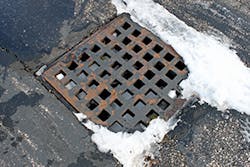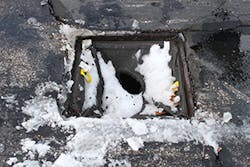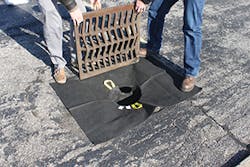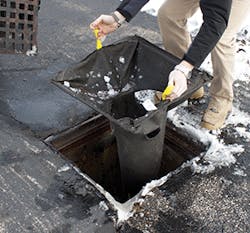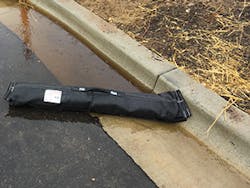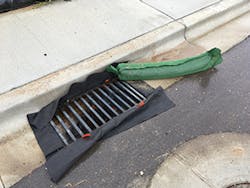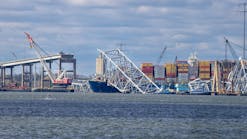Today, the economic doldrums that began from the financial collapse a decade ago are unpleasant history that many hope to forget, as today’s building boom is busier than ever. While nearly every market sector imploded a decade ago—especially construction—a June 2018 US News and World Report article says construction is not just in high demand, but that there aren’t nearly enough people to fill the jobs across all trade arenas. The report also cites an interesting phenomenon in the face of this new growth.
For years, wearing a hard hat was long stigmatized as a career choice, spurred by the 1990s’ and 2000s’ mentality that a college education was the preferred route to success. But this created a generation entering the workforce that is less likely than ever to recognize the right end of a ratchet handle. While the digitally raised might imagine a skid-steer as a livestock dilemma, employers are frantic for qualified workers.
And the building market faces another challenging scenario. Compounded by the realization of climate change and in the face of several natural disasters affecting watersheds throughout the US, erosion and stormwater regulations have been changed and in some places tightened, and at both the local and national levels, construction oversight has increased. But rather than bring contractors more anxiety, construction-site inspections are designed to keep the job going, and those in the industry, from manufacturers to job foremen, say that contractors are, in the main, anxious to comply and “do the right thing” to keep streams and waterways clean.
J. Prescott Inc. was founded in Gardiner, ME, 1955 by Everett J. Prescott; the company was first to bring the waterworks supply business (water-main tapping, installation, and underground boring) to the north of Massachusetts. Nearly 70 years later, the company has expanded significantly across the Northeast and into the Midwest regions, bringing water, wastewater, and stormwater products to the marketplace.
The company’s erosion control and geoproducts manager, Pete Hanrahan, explains, “We typically talk about the ‘big four’ when it comes to sediment management on construction sites. First, we talk about protecting adjacent property; it’s not legal to discharge onto any adjoining properties during building. We also can’t discharge to any nearby streams and waterways. We must protect stormwater inlets. And, finally, we need to prevent mud from tracking onto roadways.”
At the outset of a construction project, and as he emphasizes in the seminars he teaches, Hanrahan’s approach to problem solving is “securing the technology that is available to address these four sediment and erosion management scenarios. Then, we work backward to see
how each type of solution can fit into the scheme of the plans. In other words, we start with ‘Here’s what you are looking to accomplish, and here is what you have to use to achieve that result.’”
As a supplier, E. J. Prescott Inc. offers a large menu of erosion and sediment management product options for contractors—from low tech to the latest innovations.
Photos: Storm Sentinel installation
Fifty Years of Coconut
Augie Brazys of Blocksom & Company says the Michigan City, IN, company found the benefits of using coconut fibers more than 50 years ago. The company learned about coir fiber when searching for a replacement for sisal fiber. The Mexican government had nationalized the sisal industry in an effort to improve the economic conditions for its citizens. Instead, the move had the opposite effect as sisal producers found many of the products were too bulky to be shipped economically to their end markets, and demand dropped by 75%.
“Coir fiber was found to be tough and resilient, and it has a ‘bounce’ to it, so it is has a lot of desirable attributes going for it,” notes Brazys. “And coir fiber can last for years under a coconut tree so it has tremendous longevity. Ironically, the coir mats we make for construction sediment control are typically used for less than one year, although we’ve heard of them being on a job for three years at a stretch.”
He adds that the process used for Blocksom coir Inlet Filter includes a spray-applied latex binder to secure the fibers in a nonwoven mat, which is further strengthened with a fiberglass backing.
“We launched this product about a decade ago as a unique niche product, and it’s really gaining traction in the market as a sediment management tool on building sites. It was created specifically as a temporary inlet protection for use during active construction. They attach with zip ties and are adaptable to different styles of grates, and they can be used in conjunction with other products,” he says. “In other words, you could have a silt sock or something else inside an inlet and then use this on the outside to be the first line of defense, so to speak, to trap sediment.”
As water flows into the side of the unit, “It’s designed to filter sediment out, not to capture it. The water then conveys to an appropriate outlet after passing through the Inlet Filter, and the sediment drops out onto the paved surface where you can remove and dispose of it. You only need one person to install and remove them—and, if you need to replace them, it’s not a huge investment that eats into your profits.”
“No one wants to be ‘that company’ that is in the news for letting mud get into the watershed because they failed to comply with local regulations.
“Inspectors want to help contractors keep the jobs going and guide them to good practices if they are simply just unaware. By and large, everybody knows what they have to do, and ultimately going after those few that don’t cooperate and don’t care is the goal of enforcement.”
On-the-Job Learning and More
Few individuals have more savvy about sediment and erosion control on construction sites than Jerry Fifield, president of HydroDynamics Inc. in Colorado. Recognizing the need for creating continuity and uniformity for what he calls “the professional practice of inspection,” Fifield founded the not-for-profit organization CISEC—Certified Inspector of Sediment and Erosion Control.
“One of the most important things we say to a CISEC registrant is that the most important person they are representing is not themselves, but the contractor. It is their job to make sure the contractors stay in compliance.
“The other part of this is that if an inspector is employed by the city or county and they mandate something that is not on the plans stamped by an engineer, and that BMP fails, then who assumes the liability for that failure?”
He stresses the need for designers to know the latest technology and BMPs for sediment management, and the situations in which each works best. He has seen plans stamped for approval that are in compliance but may be subject to failing in a specific building situation.
For example, he says, if a stormwater pollution prevention plan (SWPPP) calls for fiber rolls or wattles on hillsides, these can incur failure with oncoming water.
“But if the inspector says we have to replace those with erosion control blankets and no blanket is showing on the drawing, those plans are being changed, and there is no official approval unless you go back and forth for review, which can hold up the project.”
The key, Fifield says, is good communication. “The inspector who is working out in the trenches every day knows the scenarios and can communicate with the designer to say, ‘You know, are these rolls really going to be adequate given these circumstances? And maybe there are better EC practices we should discuss.’”
He also adds that every CISEC-certified person must stay current with technology and regulations. Conditions might differ in different states; an inspector can work in Florida, but if he or she moves to California, a whole new geography, set of regulatory policies, and accepted BMP practices may have to be learned.
In the end, however, BMPs are only as good as the technology allows. “These all have limitations, and you cannot expect a contractor to prevent the discharge of sediment if they are already using the BMPs the city has approved.
“We can only do the best we can with the tools available. But the inspectors can play a real role in communicating on-the-ground experiences in all kinds of situations and all manner of construction sites to the officials. And the industry would do well to bring inspectors to the table when engineering new concepts.”
He says that silt and clay particles are so small they can pass through many of the traditional BMPs like silt fences or wattles, so they often don’t get filtered out very effectively.
“On a construction site, the goal is to keep the dirt on the site and move the water off. While a silt fence does that job, there is always the risk that with a lot of water piling up behind the fence, it will find a way out and cause more erosion as it picks up volume and velocity, resulting in a bigger mess downstream and defeating the purpose of the BMP in the first place.”
He explains, “For understanding particle size, we compare sand particles to a basketball, silt to a marble, and clay the size of a pinpoint, so there is a big difference. The holes in the geoxtextile or fiber roll will hold back medium to large sand particles, but fine sand can pass through, and silt and clay will easily pass through those holes.
“The larger sand particles typically drop out upstream from the BMP —that’s the easy part. Fine sands, silts, clays, and organics try to flow through the tiny holes in the BMP, until the holes become partially or totally plugged. At this point the ponding action takes over and backs up more water.
“While some may think that the plugged BMP’s ability to retain sediment is ineffective, the opposite is actually true. In the still water of the pond, the sands, silts, clays, and organics can slowly sink to the bottom and form a layer cake of mud behind the BMP.”
Hanson says that that although silt fences are typically about 1.5 to 2.5 feet tall, his company’s Gator Guard wattles are only 6 inches high, “so they’re low enough to not build up a huge volume of water, and this keeps the water moving into the gutter and to the storm drain.”
The wattles are 25 feet long with a sleeve on one end, allowing workers to slide one into the other and forming a connection with no gaps. The foam-filled wattles are covered in woven geotextile with an exterior apron. “You nail it down and put an inch of dirt over it, then walk on it to create a tight seal. This prevents water from traveling underneath and eroding the site.” Hanson adds that proper installation of any BMP is key to preventing failure.
For a construction site, Hanson says, protection should occur in a staged approach.
“The first stage on a housing project, for example, might be where the developer has 10 acres off a main road and they remove the topsoil and cut and fill the whole site at once. This can’t be done one lot at a time, because the property must be prepared to ensure that drainage is correct and the street, sidewalks, gutters, and the storm drains are properly installed for the correct drainage.”
Gutter Wattle
At this stage, a single rock-lined construction entrance might be installed to reduce trackout. Wattles or other perimeter protection must be put on the downslope edges of the site to protect adjacent streets and neighbors. After all the pipes, cables, and conduits are installed, the streets are excavated and filled with 12 to 18 inches of road mix consisting of sand and gravel for drainage. Last, the curbs, gutters, and sidewalks are poured and the streets are paved.
“Now, the only trackout in this first stage is between the site and main road,” says Hanson. In the second stage, “when the lots are sold and contractors are building houses one by one, that is when you get most of the erosion and trackout on the new streets. New roofs and hard surfaces, along with bare ground, construction workers, and equipment travel all contribute to excess runoff, erosion, and dust or mud on the streets.”
Perimeter wattles or short silt fences are typically installed to catch runoff, settle out the dirt, and allow clean water to flow into the gutter and to the storm drain. Synthetic foam-filled wattles, unlike silt fence or fiber rolls, can withstand equipment driving over them to access and move around the site.
Even with precautions, though, trackout and dirt spills will happen. Daily sweeping of dirt spills and fresh trackout is required, but often is ignored, notes Hanson. Storm drain inserts are a last line of defense, but they can fill up quickly with dirt and leaves, and they can be difficult to remove safely. Rock bags are often placed diagonally across the gutter to catch leaves and sediment before it gets to the storm drain. Sometimes the rock bags get broken and create a bigger mess.
To alleviate some of these problems, Gator Guard offers Weighted Gutter Wattles, which are sand-filled, multi-layered wattles that can withstand equipment traffic. Hanson explains that these 20-pound wattles are 3 feet long and 4 inches high; inside there is a 6-mil plastic tube containing clean, coarse sand. The tube is wrapped in a geotextile fabric. This unit is then topped with foam to create height, and the whole thing is wrapped in an outer geotextile cover. The bottom of the wattle is a nonwoven, felt-like material with the flexibility to act as a seal into the cracks and crevices of asphalt and concrete.
“The Weighted Gutter Wattle is perfect to place diagonally across the gutter above the storm drains to create a pond of water where the sands, silt, and clay can settle out. The geotextile fabric allows clean water to pass through to the storm inlets, or, with high flows, some water flows around the end. Then when the sediment dries, a shovel and broom can simply collect those materials,” he says.
He recalls that as money got tight after the fiscal collapse of 2008, “people were laid off, and enforcement suffered. Now we see building, and enforcement, coming back. In Boise, for example, they have strong enforcement. Inspectors go out to inspect the footings before concrete is poured and make sure stormwater BMPs are in place before giving the OK to pour. It’s all about getting contractors trained and educated to know about their legal requirements and what types of technologies are available for that compliance.”
Partnership for Progress
When contractors in the Central Northeast US need erosion management, they often rely on the expertise of S&M Farms of Fitchburg, MA. Originally founded in 1987 by William Soini, the company has more than three decades of expertise in erosion control installation.
The region’s contractors are the company’s primary market, says Shawn Sands, son of founder Soini. “We hear repeatedly that they call us first as their go-to source for erosion control when starting a new job. Between our workmanship, knowledge of the conservation needs and regulations, and a top-notch crew that installs it right the first time, we’re confident in saying we take erosion management headaches out of the equation of a builder’s worries.”
And this translates to doing more than fulfilling an order for wattles or silt fences. “For example, in many of the cities and towns we have a good working relationship with the officials. We know who they are and what they like, and moreover, what they don’t like and don’t want to see. What I can do if there’s a job in those areas is go to the contractor and say, ‘I see you have a set of plans calling for hay bales, but I happen to know they would prefer a silt fence,’ so can we do that. It makes the inspector’s job easier and certainly gives points to the contractor for exceeding the requirements.”
Sands also recommends certain practical measures. “You often see a silt fence improperly installed, or that has rocks backing it up. We are very careful installing silt fences that are properly trenched in. And for minimal impact, we now use a mini-trencher with a smaller footprint that makes small cuts and is less invasive to the soil.”
The choice of BMP sometimes depends on the site and the situation. “On a recent solar job that was fairly remote in the woods, we had to do erosion control the whole mile into the woods. In situations where there is a lot of active equipment, with the excavator buckets hitting rocks placed against a fence, that’s when we will use straw bales. Everything is done by weighing the purpose and outcomes.”
Working with newer inspectors has its pitfalls because they might be unfamiliar with “how things work out on the site, which can be very different than what a plan orders up.”
He notes, “If you don’t have real experience working in these difficult landscapes—with slopes, a lot of rain, or heavy equipment—then you can require something for erosion that is completely impractical. My wish would be for all the stakeholders on construction projects to be familiar with the many varieties of situations you encounter, and be educated as to what works best—when and where.”
He reflects that larger contractors often hire inspectors as in-house employees or outside consultants, and they often seem to be more fully aware of the latest trends and technologies.
“In any case, our erosion supplier, EJC, offers us high-quality products from a number of reputable manufacturers like Blocksom, Filtrexx, and others. We trust them to deliver the best erosion and sediment management technologies, and our customers trust us to protect their properties and keep them in compliance with all permits and regulations.”
Replacing Nature Naturally
“One thing we notice on all of our construction sites is a deficiency of organic matter,” reports Britt Faucette, the chief scientist and director of technical services with Akron, OH-based Filtrexx International.
Filtrexx invented the first patented compost filter sock, and Faucette says he feels honored to be a part of that effort. He says the challenge he enjoys is to constantly improve on “technologies that are inspired by, and mimic, nature—a process called biomimicry.”
“We are inspired by nature in everything we do; replacing or replenishing organic matter on construction sites and in our watersheds by product and site design can have a very profound impact. This includes reducing the generation of runoff, preventing soil erosion, and minimizing sediment.”
The company’s SiltSoxx is the flagship product, designed to be used in a variety of applications such as slope interruption, check dams, and inlet protection on construction sites, and for sediment control in a wide variety of industries, including transportation, oil and gas, solar energy, and residential and commercial construction.
Faucette also leverages his more than 15 years working as the chief scientist to engineer development of sustainable, environmentally beneficial products to bring exceptional expertise to land owners, design engineers, and contractors that helps maximize their site protection.
The company’s compost filter sock uses a proprietary coarse compost filtration media that affects site water flow and filtration. Project engineers, designers, and contractors often want technical assistance on project design, including product sizing, and optimal spacing.
“We are the only company that has developed design tools, based on scientific research, to help engineers, designers, and contractors place our products across an entire site for variety of applications,” he notes.
Once the needs are calculated, he says, the compost filter sock can be placed in specified lengths, or connected in continuous lengths to meet any size project or run.
“The fewer breaks you have, the better, and the components of our passive filtration device don’t dam water but let it move through. This allows the system to trap particulates and sediment, while also trapping soluble pollutants, such as nitrogen, heavy metals, and hydrocarbons.”
Filtrexx SiltSoxx are available in both cotton biodegradable and polypropylene photodegradable options.
“Some state or federal agencies require these to be left in place, so we have a cotton mesh compost filter sock that breaks down over time and can be left on the site permanently. The compost filler material that is eventually released is of course a beneficial source of organic matter to the depleted soil.”
The polypropylene mesh sock lasts longer, he says, but “once you are done, you can simply open them up, spread the coarse compost filter media contents on your site, which replenishes needed organic matter, then take the polypropylene portion to the landfill. The waste portion represents only about 5% of the total product weight, while the compost media left onsite significantly reduces carbon footprint and improves soil and water quality.”
But getting the word out on the attributes of technologies like these to builders, contractors, engineers, and regulators is never complete.
“What we really need is more education and outreach on what these products can really do, how to use them, and how they perform. It is critical that construction engineers, designers, contractors, and the regulatory community really know how they work, where to use them, and how they perform relative to other options,” he says.
“Soil type and organic matter content vary widely, affecting the soil erosion process. Knowing how these site attributes can work for or against you, and how product selection and design can enhance or exacerbate this, can be the difference between project failure and success.”
Rock bag and Gutter Wattle
Willingness to Invest
Many companies are willing to invest in high-quality BMPs “if they can be easily installed, perform the controls successfully, and possibly be reused in the future,” says Corrie Branum, founder of Environmental Compliance and Controls Solutions. After working as an environmental compliance and control specialist for private industry, Branum founded her Nevada-based consulting firm to
bring this expertise to all markets.
“I thought I could bring something to the market that is above and beyond most consulting firms,” she says. “Having the opportunity to work with multiple agencies, I really understand the full continuum of erosion, stormwater, and environmental compliance management from the regulatory and the industry perspective. This is a unique balance and one that both sides appreciate. Plus, I have been able to watch BMP technology evolve over the years and I communicate this to both parties.”
Branum adds that her experience with Aggregate Industries in Nevada and Kiewit Infrastructure West in California were lessons in understanding how companies need to develop an environmental program “and have controls that they actually understand and can implement.”
She says she has seen Filtrexx compost socks “work great in many applications,” and gained her first impression from the product while working on the San Diego airport’s Green Building project in 2010.
“But the true test was their performance in the Las Vegas climate, which is very challenging to say the least,” she says. “First, there is the extreme heat and dry wind we get here, especially during summer. I can best describe it as being surrounded by a blow dryer for four months. A basic straw wattle can have a very limited life in this environment. After seeing how well Filtrexx did in California, I started using them here. And they did just what I expected them to do—they withstood the summer climate.”
As regulations tighten with each season of extreme weather—Houston now requires new homes be built 24 inches above grade—contractors must constantly be aware of not only the latest requirements, but also the latest information on erosion management technology to align their respective needs. Together these efforts can work to cost-effectively protect their site, the local water resources, and ultimately their reputations as good stewards of the environment.
